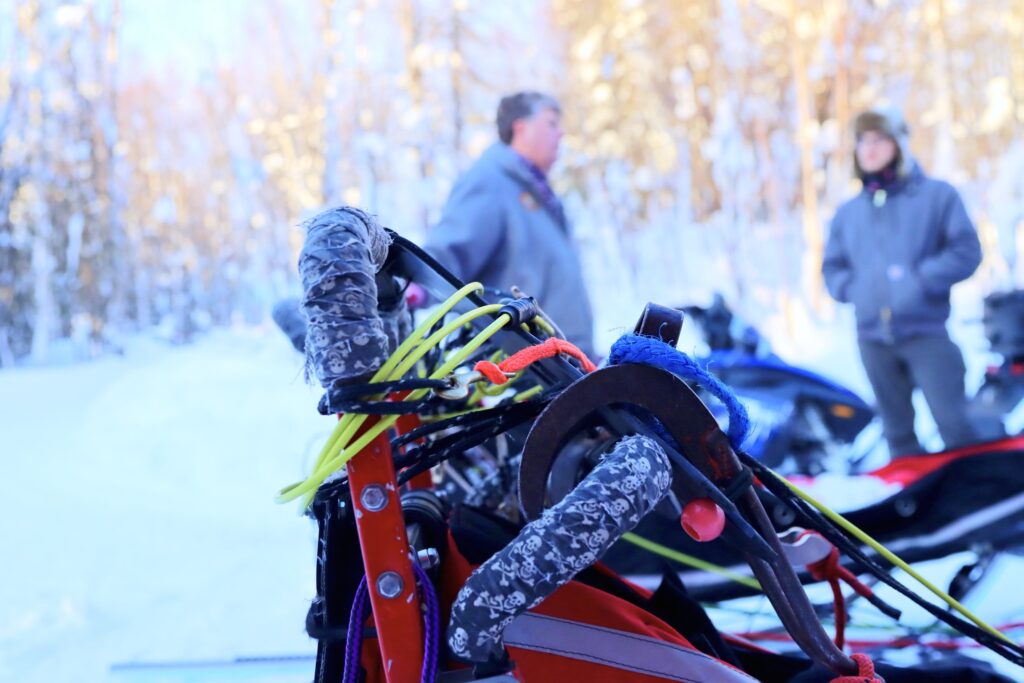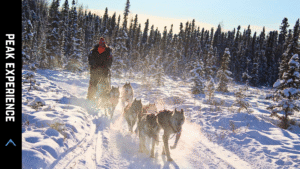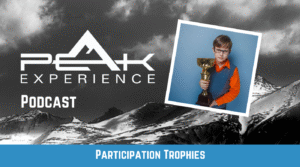In the sport of dog mushing, the lead dogs are the ones out front, setting the pace, choosing the path, and guiding the rest of the team across miles of frozen wilderness. They are more than just fast and strong, they possess vision, intelligence, and the ability to make quick decisions under pressure. Without capable lead dogs, even the most powerful sled team will lose direction, waste energy, or fail to reach its destination.
The same is true for leadership in business and organizational life. Whether you’re leading a small team, managing a department, or running an entire company, your role mirrors that of the lead dog. Your ability to chart a course, inspire confidence, and make decisions in the face of uncertainty determines not just your own success, but the success of every person depending on you.
In this article, we’ll explore what makes lead dogs, and great leaders, so effective, and how you can adopt the principles of mushing leadership to guide your own team through any terrain.
At the bottom of the article you will see our one-of-a-kind team-building program that is enrolling now
Understanding the Role of the Lead Dog
In mushing, every dog on the team has a specific role. The wheel dogs provide stability and control near the sled. Team dogs deliver raw pulling power. Swing dogs help navigate turns and keep the line straight. But the lead dogs carry the greatest responsibility. They are the visionaries and navigators, the ones who interpret the musher’s commands and translate them into action for the entire team.
A good lead dog doesn’t just follow orders, they anticipate challenges, read the trail, and make judgment calls in real time. They inspire the rest of the team to follow their lead, even when conditions are rough and visibility is low.
In business, the parallel is clear: leaders must be able to see the path ahead, make adjustments as circumstances change, and maintain the trust of their people so that the entire team keeps moving forward.
Visionary Leadership: Seeing the Trail Before the Rest
One of the most important qualities of a lead dog is vision. In a literal sense, they are the first to encounter every turn, hill, or obstacle. In a metaphorical sense, they must sense what’s coming before the rest of the team sees it.
In leadership, vision is the ability to anticipate opportunities and threats before they fully emerge. It’s about seeing the big picture, not just the next step. Without this foresight, teams are reactive rather than proactive, constantly scrambling to respond rather than strategically moving toward their goals.
How to Develop Visionary Leadership
Scan the environment constantly. Just as a lead dog keeps its eyes on the horizon, effective leaders regularly gather information, study trends, and assess the competition.
Connect today’s actions to tomorrow’s goals. Make sure your team understands not just what they’re doing, but why it matters for the long-term journey.
Encourage innovative thinking. Vision isn’t just about seeing the obvious, it’s about imagining new possibilities that others haven’t considered.
Decision-Making Under Pressure
The Iditarod and other long-distance sled dog races take place in some of the harshest conditions imaginable. Weather changes in minutes. Ice cracks without warning. Blizzards can obscure the trail entirely. In these moments, the musher relies on the lead dogs to help make split-second decisions, veer left to avoid thin ice, slow down to preserve the team’s strength, or press forward to beat an incoming storm.
In leadership, crises may not involve frozen rivers or snowstorms, but they can feel just as high-stakes. Market conditions shift, key employees leave unexpectedly, technology fails at the worst possible moment. Your ability to make quick, confident decisions can determine whether your team weathers the storm or falls apart.
Strategies for Better Decision-Making in High-Pressure Situations
Trust your preparation. Lead dogs perform well in tough situations because they’ve trained for them. As a leader, invest in scenario planning and skill development so you’re ready when the moment comes.
Rely on trusted advisors. Even the best lead dog listens to the musher. Surround yourself with people whose perspectives you value and keep lines of communication open.
Balance speed with clarity. Acting too slowly can be costly, but so can rushing in without a clear plan. Make decisions swiftly, but communicate the reasoning and next steps clearly to your team.
Inspiring Confidence in the Team
Lead dogs can’t lead by force, tthey lead by earning trust. The rest of the team must believe that following the lead dogs will get them where they need to go. If trust falters, the team may slow down, lose alignment, or refuse to move altogether.
In business, the same principle applies. Teams follow leaders they believe in, leaders who have demonstrated competence, integrity, and care for the well-being of the group. When people trust their leader, they give more effort, show more resilience, and work together more effectively.
How to Inspire Trust and Confidence
Lead by example. Show your team that you’re willing to do the hard work and make sacrifices alongside them.
Communicate openly. Keep your team informed about challenges, decisions, and the reasons behind your choices.
Recognize and value contributions. Every member of the sled dog team is essential to reaching the finish line. Make sure your people know their work matters.
Guiding Through Uncertainty
In mushing, there’s no perfectly smooth trail from start to finish. Conditions shift constantly, and the best leaders—and lead dogs—know how to adapt on the fly. They balance sticking to the planned route with making necessary course corrections when the environment changes.
In the modern workplace, uncertainty is the norm. Markets fluctuate. Customer needs evolve. Disruptive technology changes the playing field overnight. Leading through uncertainty requires both strategic flexibility and a steady hand that reassures the team.
Tools for Leading in Uncertain Times
Scenario planning. Just as mushers prepare for sudden storms, plan for a range of possible futures so you’re not caught off guard.
Empower your team. Give your people the skills and authority to make decisions within their roles so the team can adapt quickly.
Stay mission-focused. The trail may change, but the destination stays the same. Keep your team’s eyes on the ultimate goal.
The Importance of Role Alignment
One of the most powerful lessons from mushing is that every position matters. A great lead dog in the wrong spot—or a team without a steady wheel dog, will struggle. The same is true in business. Leaders must recognize each person’s strengths and place them where they can contribute most effectively.
Just as the musher carefully chooses which dogs will lead, which will run in swing, and which will steady the sled, leaders must ensure that their people are in roles that suit their abilities, temperament, and career goals.
Practical Steps for Role Alignment
Assess strengths regularly. Use skills assessments, feedback sessions, and observation to understand each person’s capabilities.
Rotate roles when needed. Sometimes a strong team member can grow by taking on a different position.
Value all contributions. Not everyone needs to be a lead dog to be critical to success.
Building Resilience Like a Musher
Even the best lead dogs face setbacks: a sudden injury, an unexpected storm, a wrong turn on the trail. What sets great teams apart is resilience, the ability to recover quickly and keep going.
Leaders can build resilience in their teams by fostering a culture of learning, adaptability, and mutual support. When people know they can recover from mistakes and challenges, they’re more willing to take initiative and push forward.
How to Build Resilient Teams
Normalize problem-solving. Treat challenges as opportunities to innovate rather than as failures.
Celebrate recoveries. Recognize not just wins, but the grit and effort it takes to bounce back.
Encourage a long-term view. Remind your team that one setback is just a moment in the larger journey.
Bringing It All Together: Leading Like a Lead Dog
When you step into the role of a lead dog in your organization, you commit to more than just getting from point A to point B. You commit to seeing the trail ahead, making tough calls under pressure, earning and keeping your team’s trust, and guiding them through uncertainty. You become the steady presence that keeps the team aligned and moving toward its goal, no matter how rugged the terrain.
The beauty of the mushing metaphor is that it reminds us that leadership is a shared journey. While the lead dogs set the pace and direction, they succeed only because of the coordinated effort of the entire team. As a leader, your greatest impact comes from unlocking the potential of those you lead, ensuring every member plays their part in harmony.
The lead dog’s position isn’t for everyone. It requires vision, decisiveness, adaptability, and a deep commitment to the well-being of the team. But for those willing to take on the responsibility, the rewards are immense, not just in achieving organizational goals, but in knowing you’ve guided your people safely and successfully through challenging terrain.
In both mushing and leadership, success isn’t about avoiding the storms. It’s about leading with confidence, resilience, and clarity when the storms inevitably come.
If you’re ready to step into your role as the lead dog for your team and want to strengthen your leadership skills, consider investing in leadership development experiences that challenge you to lead under pressure. Sometimes, the best way to learn to guide your team is to experience firsthand what it means to lead on the trail.
Call to Action:
If you’d like to explore how mushing-inspired leadership training can transform your team’s performance, reach out to Dr. Robert Forto at The Adventure Strategist to learn more about our hands-on leadership programs.
Program Description:
Unleashing Excellence: Leadership and Team Building Lessons from the Sport of Dog Mushing

Imagine your team stepping away from the the every day grind and onto the snowy trails of Alaska, where leadership, trust, and teamwork aren’t just concepts… they’re team -building skills.
In this immersive weekend leadership retreat, your team will partner with a working sled dog team to learn how to:
Lead with vision and clarity in challenging conditions
Make confident decisions under pressure
Recognize and leverage the strengths of every team member
Build unshakable trust that lasts long after the snow melts
Guided by Dr. Robert Forto, an experienced musher, leadership coach, and founder of The Adventure Strategist, this isn’t a classroom seminar, it’s a hands-on, heart-pounding, laugh-together, problem-solve-together, “we’ll never forget this” kind of experience.
By the end of the weekend, your team will return to work more cohesive, more confident, and more committed to pulling in the same direction, no matter what the trail ahead brings.
Call to Action
Spots for Winter 2026 are extremely limited, just like the best sled dog teams, we keep our groups small for maximum impact.
- If your Alaska-based small business has a team of 8–10 and you’re ready to:
Strengthen trust - Improve communication
- Inspire next-level leadership
…then this is your moment.
📅 Reserve your team’s weekend now — and discover what your business can achieve when everyone’s pulling together.




